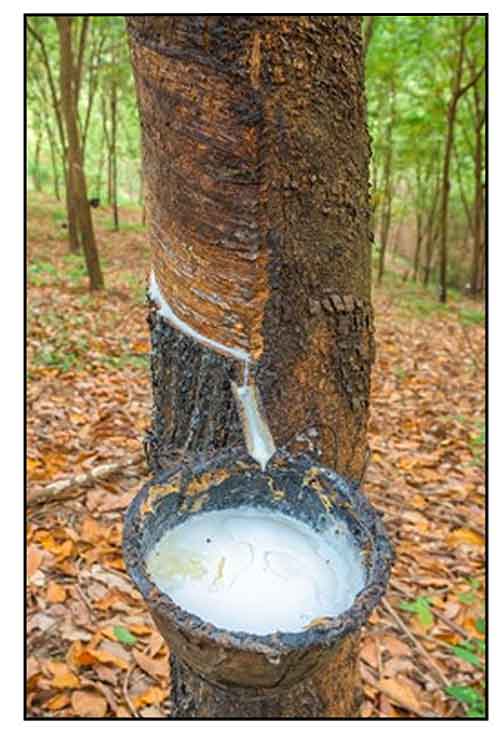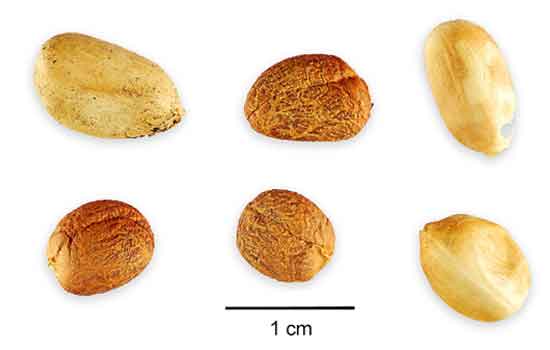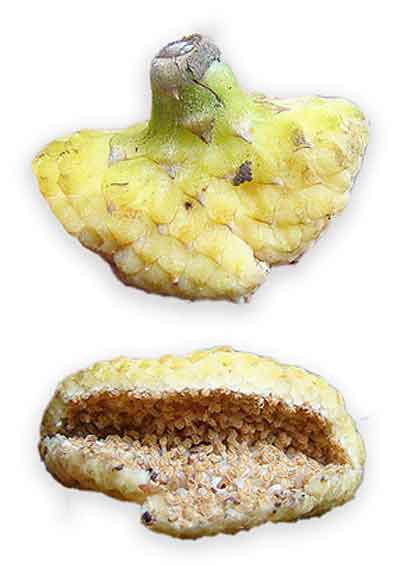
Family • Moraceae
Halimukon
Castilla elastica Cerv.
MEXICAN RUBBER TREE / ULETREE
| Scientific names | Common names |
| Castilla elastica Cerv. | Halimukon (Tagalog) |
| Accepted infraspecifics (3) | Castilloa rubber (Engl.) |
| Castilla elastica subsp. costaricana (Liebm.) C.C.Berg | Mexican rubber tree (Engl.) |
| Castilla costaricana Liebm. | Panama rubber tree (Engl.) |
| Castilla daguensis Pittier | Uletree (Engl.) |
| Castilla panamensis O.F.Cook | |
| Castilla elastica subsp. elastica | |
| Castilla elastica var. liga J.Poiss. | |
| Castilla guatemalensis Pittier | |
| Castilla gummifera (Bertol.) Standl. | |
| Castilla lactiflua O.F.Cook | |
| Castilla markhamiana Markham | |
| Castilla nicoyensis O.F.Cook | |
| Ficus gummifera Bertol. | |
| Castilla elastica subsp. gummifera (Miq.) C.C.Berg | |
| Ficus gummifera (Miq.) Miq. | |
| Urostigma gummiferum Miq. | |
| Castilla elastica Cerv. is an accepted species. KEW: Plants of the World Online | |
| Other vernacular names |
| BRAZIL: Puluvao. |
| GERMANY: Castilloa, Hulebaum, Kautschukbaum. |
| MAYAN: Ki'c, K'ik'che'.. |
| SAMOAN: Pulu mamoe. |
| SINHALA: Wal-rubber, Ron-rubber. |
| SPANISH: Arbol del ule, Arbor de hule, Caucho, Caucho negro, Palo de hule, Hule, Ule. |
February 2024
![]()
 |
| PHOTOS / ILLUSTRATIONS |
| IMAGE SOURCE: Castilla elastica leaves / Viinayaraj / CC BY SA 3.0 Unported / Image modified / Click on image or link to go to source page / Wikipedia |
| OTHER IMAGE SOURCE: Castilla elastica - fruit of the Panama rubber tree / Dick Culbert / Creative Commons Attribution 2.0 / Image modified / Click on image or link to go to source page / Wikimedia Commons |
| OTHER IMAGE SOURCE: Castilla elastica seeds / © Steve Hurst @ USDA-NRCS PLANTS Database / USDA |
| OTHER IMAGE SOURCE: Rubber tree / © Yotrak / Getty Images / Non-commercial use / Image modified / Click on image or link to go to source page / Geojit Insights |
Additional
Sources and Suggested Readings |
• |
DOI: It is not uncommon for links on studies/sources to change. Copying and pasting the information on the search window or using the DOI (if available) will often redirect to the new link page. (Citing and Using a (DOI) Digital Object Identifier) |
| List of Understudied Philippine Medicinal Plants |
| New plant names needed The compilation now numbers over 1,300 medicinal plants. While I believe there are hundreds more that can be added to the collection, they are becoming more difficult to find. If you have a plant to suggest for inclusion, native or introduced, please email the info: scientific name (most helpful), local plant name (if known), any known folkloric medicinal use, and, if possible, a photo. Your help will be greatly appreciated. |
• |
 |


 • Castilla elastica is a tree that grows up to 30 m tall with diameter up to 60 cm. It has spreading or drooping branches. Foliage: Leaves are oblong, 20-45 cm by 7-15 cm, coarse, densely hairy on both sides, base heart-shaped, tip pointed. Flowers: It is androdioecious: there are some trees which bear only male inflorescences, while others are cosexuals whereby they produce both male and female inflorescences. Stamens on both types of trees are fertile. Female inflorescences: discoidal with shallow central depression, pistils are aggregated; sessile. Male inflorescences on cosexual plants: urceolate, "fig-like" with an apical hole covered by imbricate bracts; anthers 1.6 mm in length; about 50 flowers. Staminate inflorescences on male plants: bivalvate; about 400 flowers; anther 1.2 mm in length. Fruit: Fruit is a flat disk of many green bracts with 20-30 fruits, orange-red, fleshy, each fruit bears 1 seed. (
• Castilla elastica is a tree that grows up to 30 m tall with diameter up to 60 cm. It has spreading or drooping branches. Foliage: Leaves are oblong, 20-45 cm by 7-15 cm, coarse, densely hairy on both sides, base heart-shaped, tip pointed. Flowers: It is androdioecious: there are some trees which bear only male inflorescences, while others are cosexuals whereby they produce both male and female inflorescences. Stamens on both types of trees are fertile. Female inflorescences: discoidal with shallow central depression, pistils are aggregated; sessile. Male inflorescences on cosexual plants: urceolate, "fig-like" with an apical hole covered by imbricate bracts; anthers 1.6 mm in length; about 50 flowers. Staminate inflorescences on male plants: bivalvate; about 400 flowers; anther 1.2 mm in length. Fruit: Fruit is a flat disk of many green bracts with 20-30 fruits, orange-red, fleshy, each fruit bears 1 seed. (

